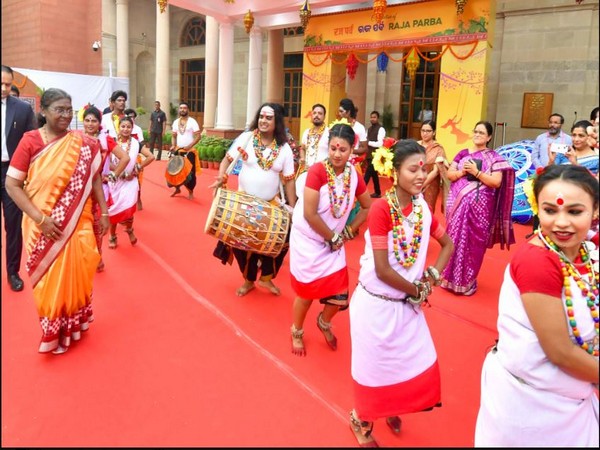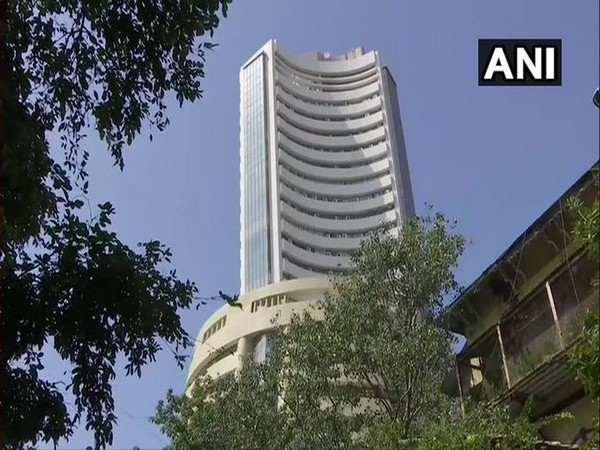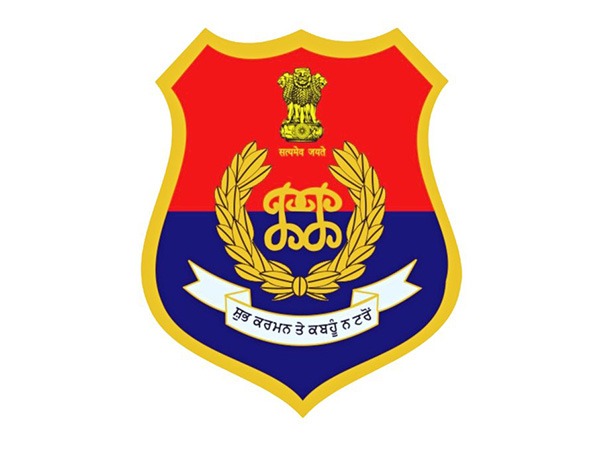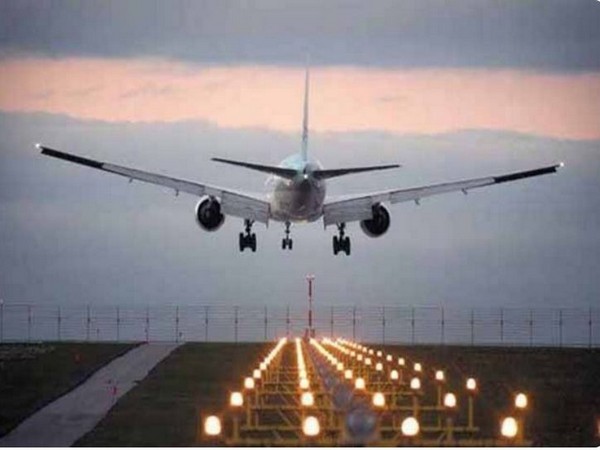New Delhi [India], June 15 (ANI): President Droupadi Murmu attended Odisha’s agricultural festival ‘Raja Parb’ celebration at Rashtrapati Bhavan on Friday and witnessed cultural performances including ‘Mayurbhanj Chhau’, ‘Sambalpuri’ and ‘Karma’ dances.
The ‘Raja Parb’ is one of the most celebrated festivals in Odisha. The three-day-long agricultural festival is celebrated during the onset of monsoons and is celebrated by the people with great enthusiasm and fervour.
As part of the celebrations, swings decorated with flowers and mango leaves were set up and were the main attraction of this festival. Mehndi artists were invited and Odia cuisine, such as various types of ‘pitha’ apart from ‘sherbet’ and ‘paan’, were arranged for the participants, according to a press release by the President’s Secretariat. 
The Rashtrapati Bhavan also took to its official X handle and said, “President Droupadi Murmu attended the celebrations of Raja Parb, an agricultural festival of Odisha in Rashtrapati Bhavan. She also witnessed a cultural programme in which Raja Geet and Mayurbhanj Chhau, Sambalpuri and Karma dance performances were presented.”
Notably, President Murmu is from Odisha’s tribal community and it is the first occasion when the R agriculture-based festival of Odisha, was celebrated at Rashtrapati Bhavan. This celebration provided a unique glimpse of Odia culture and lifestyle to the participants.
Meanwhile, the BJP Odisha also took to its official X handle and posted about the participation of state Chief Minister Mohan Charan Majhi in the festival.
It said, “On the first day of Odisha’s Ganparb Raj, Chief Minister Mohan Majhi attended the Raj Parb celebrations at the state museum premises in Bhubaneswar and watered the trees and made the children swing.”
Also, BJP MP from Puri, Sambit Patra inaugurated Raja Mahotsav at the Odisha Tourism Development Corporation (OTDC) in Khordha.
It is believed that the mother Goddess Earth or the divine wife of Lord Vishnu undergoes menstruation during the first three days. The fourth day is called Vasumati Gadhua, or the ceremonial bath of Bhudevi.
The term ‘Raja’ has come from ‘Rajaswala’ (meaning a menstruating woman) and during the medieval period, the festival became more popular as an agricultural holiday remarking the worship of ‘Bhudevi’, who is the wife of Lord Jagannath. A silver idol of Bhudevi is still found in Puri Temple aside from Lord Jagannatha.
As part of the celebrations, girls wear new dresses, enjoy the ‘Doli Jhula’ and savour traditional delicacies, with some notable dishes being ‘Podo Pitha’, ‘Manda Pitha’ and ‘Arisha Pitha’.
As long as the festival goes, no agricultural activity like ploughing or sowing takes place for it is believed that Mother Earth goes through rejuvenation during these three days.
The first, second and third days of ‘Raja Parba’ are called ‘Pahili Rajo’, ‘Mithuna Sankranti’, and ‘Bhu Daaha’ or ‘Basi Raja’, respectively. The fourth day marks the ceremonial bath, called ‘Vasumati Snana.’ (ANI)
Disclaimer: This story is auto-generated from a syndicated feed of ANI; only the image & headline may have been reworked by News Services Division of World News Network Inc Ltd and Palghar News and Pune News and World News
HINDI, MARATHI, GUJARATI, TAMIL, TELUGU, BENGALI, KANNADA, ORIYA, PUNJABI, URDU, MALAYALAM
For more details and packages
















